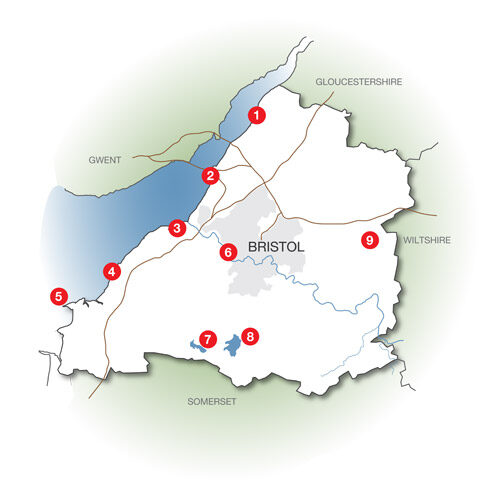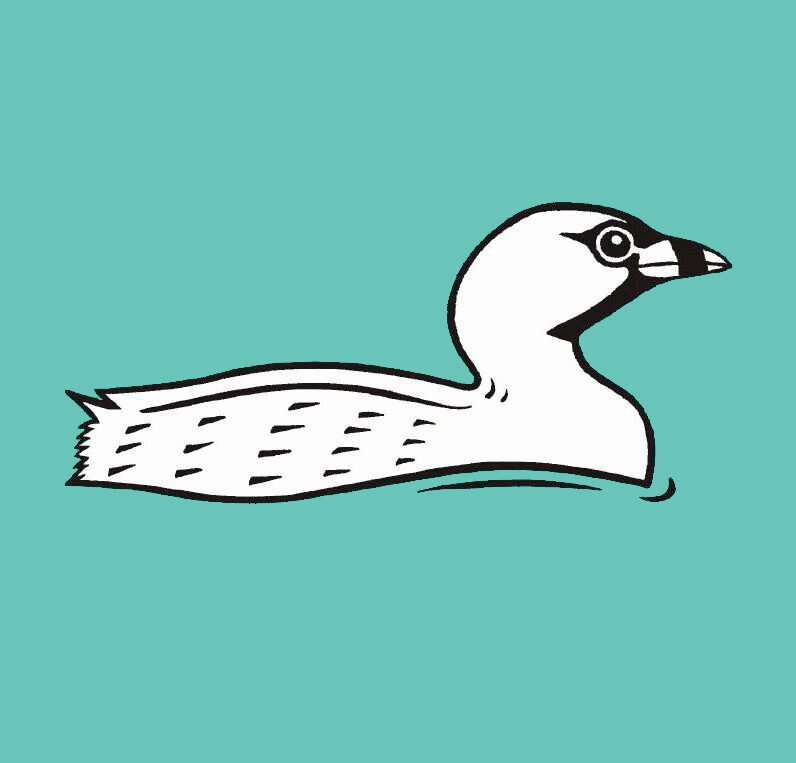Oldbury Power Station is situated on the banks of the river Severn about 5kms north of the old Severn Bridge. There are public footpaths around the power station, but for obvious security reasons, prior permission has to be obtained for entering into the site itself. The nature reserve inside the site consists of several lagoons, pools, scrub, small copses and a nature trail and bird hide which are all part of the power station landscaping programme. The shoreline regularly attracts many species of waders and ducks and the coastal fields and scrub also hold many migrant birds on passage through the area.
To find out more about birds and other wildlife visit OPS Birds
Severnside is a general reference to the shoreline extending from Aust Warth southwards to Chittening Warth close to Avonmouth, a total distance of about 8 km. The main vantage points are located at New Passage (and including Northwick Warth) and Severn Beach (and including Chittening Warth). Severnside is arguably our best coastal site for seeing a wide variety and numbers of birds at any given time of year. The shoreline regularly attracts many species of waders and ducks and the coastal fields and scrub also hold many migrant birds on passage through the area. On its day, sea-watching off Severn Beach during strong south-westerly winds can be truly breathtaking with many seabirds milling around low over the water before regaining their bearings and flying back down river. Extremely close views are often possible.
To find out more about birds and other wildlife visit Severnside Birds
Details of Portbury Wharf nature reserve can be found on the Avon Wildlife Trust website.
The Clevedon & Portishead site extends from Portbury Wharf at the mouth of the river Avon at Royal Portbury Dock, southwards through Portishead and Clevedon town seafronts and ends at the Yeo Estuary, north of St Thomas’ Head and Sand Pt. The total distance is some 20kms though only about 8kms of these are likely to be of interest to the birder. The main vantage points are located at Portbury Wharf, Portishead seafront, Wain’s Hill at Clevedon and Channel View farm at Kingston Seymour. The shoreline regularly attracts many species of waders and ducks though most of these are concentrated and best seen along the stretch from Wain’s Hill southwards to the Yeo Estuary. This stretch also incorporates the small outfalls at the Blind Yeo and Kenn rivers. The coastal fields and scrub also hold many migrant birds on passage through the area. The Wain’s Hill headland at the south end of Clevedon town is particularly good for seeing migrant passerines, especially at migration times and also during periods of bad weather when many birds become grounded. Sea-watching is best undertaken from Ladye bay at the northern end of Clevedon town but the estuary is fairly wide here and a telescope is essential.
The Clevedon & Portishead site extends from Portbury Wharf at the mouth of the river Avon at Royal Portbury Dock, southwards through Portishead and Clevedon town seafronts and ends at the Yeo Estuary, north of St Thomas’ Head and Sand Pt. The total distance is some 20kms though only about 8kms of these are likely to be of interest to the birder. The main vantage points are located at Portbury Wharf, Portishead seafront, Wain’s Hill at Clevedon and Channel View farm at Kingston Seymour. The shoreline regularly attracts many species of waders and ducks though most of these are concentrated and best seen along the stretch from Wain’s Hill southwards to the Yeo Estuary. This stretch also incorporates the small outfalls at the Blind Yeo and Kenn rivers. The coastal fields and scrub also hold many migrant birds on passage through the area. The Wain’s Hill headland at the south end of Clevedon town is particularly good for seeing migrant passerines, especially at migration times and also during periods of bad weather when many birds become grounded. Sea-watching is best undertaken from Ladye bay at the northern end of Clevedon town but the estuary is fairly wide here and a telescope is essential.
The muddy and tidal river Avon flows from the city through the gorge and into the Severn estuary at Avonmouth, a distance of about 10kms. The stretch is not a hotspot for many good birds though some Redshank and Common Sandpipers do occur from time to time and gulls are always present. The Avon Gorge site is best known for the Peregrine Falcons which breed on the rocky cliff ledges each year. The BOC has held breeding season Peregrine watches here annually since 1990 in order to provide some protection against egg and chick thieves. The best vantage points to see the birds are along the circular ‘seawalls’ road which runs along the top of the gorge from the Clifton zoo area to Stoke Bishop. The birds of course, can decide to nest anywhere along this stretch from year to year but our watch records have shown that the gorge viewpoint closest to the zoo is normally the most productive area. With extensive breeding season coverage by Club members, many other species have been seen, notably Sparrowhawk, Buzzard, Kestrel and Ravens and occasional sightings of Red Kite, Osprey and Goshawk.
To find out more about birds and other wildlife visit Blagdon Lake Birds
To find out more about birds and other wildlife visit CVL Birding
Marshfield village is situated approx 10 miles east of Bristol within the boundary of south Gloucestershire. The area is the highest point in south Gloucestershire and is mainly upland arable farmland with many crop fields bounded by dry stonewalls and quiet countryside lanes. The limited variety of habitat around the area means that Marshfield does not attract such a wide range of bird species that are found at the coastal sites but it does hold a number of ‘endemic’ species which are quite uncommon elsewhere around the Bristol area. Marshfield is our local stronghold for (summer) Quail, Grey Partridge, Yellowhammers and Corn Buntings but of course many other species turn up as well.


